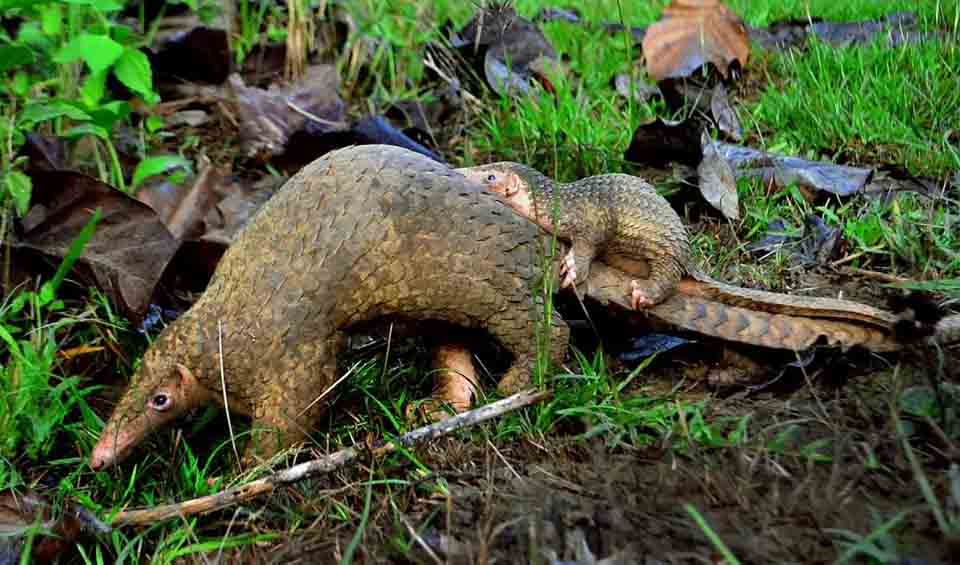Pholidota – Pangolins
The most trafficked mammals in the world
Evolutionary unique, severely abused, globally endangered.
Pangolins, often evoking a sense of wonder due to their unique appearance, are remarkable creatures armored with scales made of keratin—the same substance that human nails are composed of. These scales act as an exquisite defense mechanism, creating a formidable shield that, when the animal curls into a tight ball, leaves predators with no vulnerable flesh to grasp. The name ‘pangolin’ itself derives from the Malay word ‘pengguling’, meaning ‘one who rolls up’, a fitting moniker for these solitary, primarily nocturnal mammals.
These scale-clad animals lead a secretive life, emerging under the cover of darkness to embark on their nightly forays. Their diet is specialized; with no teeth to speak of, they use their extraordinarily long, sticky tongues, which can extend to a length greater than their own body, to feast on ants and termites. This diet earns them the colloquial name ‘scaly anteaters’, though they are not closely related to true anteaters.
Despite their unassuming nature, pangolins hold a somber title as the most trafficked mammals in the world. Their scales, believed to have medicinal properties in some cultures, and their flesh, considered a delicacy in others, make them a prime target for illegal wildlife trade. This has led to a drastic decline in their populations, and all eight species of pangolins are now threatened with extinction. Three species have the dire distinction of being classified as ‘Critically Endangered’ by the International Union for Conservation of Nature (IUCN).
In Nepal, where the Chinese and Indian species of pangolins find refuge, the government has taken a firm stance against the trafficking of these creatures. They have implemented stringent laws to combat the illegal pangolin trade, with penalties reaching up to 15 years of imprisonment and fines up to one million Nepalese rupees. This is a testament to the country’s commitment to conserving its wildlife heritage.
Families in this order
The most trafficked mammals in the world

